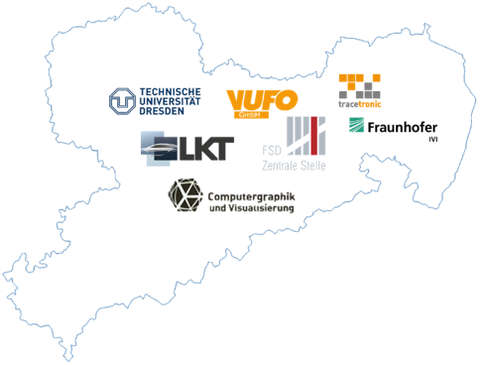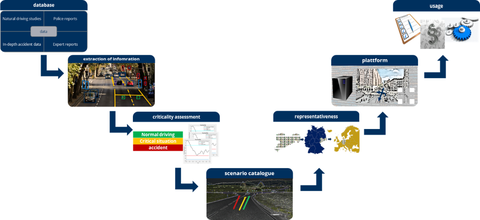SePIA
The use of automated driving functions and assistance systems in vehicles, whether to promote road safety or to enhance the comfort of the vehicle user, is becoming increasingly more common. A major challenge is the testing and validation of functions not only during development, but also for homologation and periodic technical testing over the entire lifecycle of the systems.
Due to cost, time and safety reasons, simulative testing based on test scenarios is a promising approach for efficiently supporting real test drives. For a realistic and driving appropriate assessment of the possible scenarios, different data sources have to be combined to represent the real world.
The project SePIA (scenario based platform for the inspection of automated driving functions) aims at providing a prototypical platform with realistic simulation scenarios for the testing of automated driving functions.

Figure 1: Consortium partners
Under the coordination of Fahrzeugsystemdaten GmbH, a number of Saxon research institutions and companies have formed an interdisciplinary consortium for this purpose (see Figure 1). In addition to comprehensive police and depth-analytical accident data, the database also includes expert reports, video and vehicle data. The traffic situations extracted from this data are classified according to their characteristics and grouped into scenarios, for example, following behind a vehicle on a 2-lane motorway without speed limit.
Each scenario must be examined for its criticality. For this, objective criteria are used that allow a comparable evaluation of the individual data sources, such as the course of the time-to-collision. In addition, avoidance possibilities and their feasibility as well as infrastructural causalities are included in the assessment.
The scenario catalog created in this way is only valid for the area of the data basis used. In order to enable transferability to other regions and countries, the individual sources are checked for their representativeness and compared with selected target databases. This makes it possible to assess the relevance of the scenarios for other regions as well.
The individual scenarios are then stored on the platform in simulable formats and are available for use in evaluating individual automated driving functions or the complete vehicle. The entire process is shown in Figure 2.
The core tasks of the Institute of Automotive Engineering within the project are the criticality assessment and process description of the recognized situations as well as the representativeness consideration of the resulting scenario catalogue.

Figure 2: procedure for scenario gerneration and application

